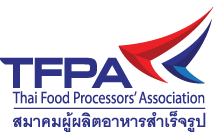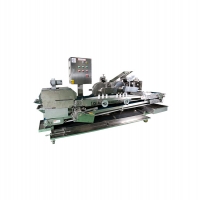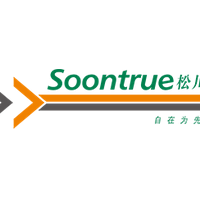Mission
The Thai Food Processors’ Association was established with the following key objectives:
1. To promote and to develop the establishments and processed foods
2. To provide the highest quality of scientific assistance and programs in support of member needs.
3. To serve as a communication link between members and government agencies.
4. To represent as a speaker for the collective problems and obstacles in food processing industry.
History
The Thai Food Processors’ Association (TFPA) was established in 1970 as a private non-profitable organization designed to strengthen the food processing industry in Thailand. The Association currently serves nearly to 200 members ranging from small to large companies. The TFPA run by Board of Directors elected for a two year-term from its members. The TFPA has been conceded from competent government agencies such as the Department of Foreign Trade, to regulates the exporters of canned tuna to be a member of the TFPA. The Association also plays the supporting and recommending in roles in setting up both domestic food regulations and international food standards.
Activities
The TFPA has continuously played a role in supporting and assisting its members in solving several problems and obstacles which could be tackled effectively while some remain serious and await further implementation in the future. The TFPA provides the information and exchanges views with the government agencies in negotiating with importing countries in terms of standard regulations, trade barriers and also provides technical project assistances for members such as the GMP or the HACCP.
Development of Thai processed food for world market
Thailand has emerged as one of few countries that produce food to feed the world population. Food production can be classified into stages as follows:
1. Initial Stage
The development of Thai processed food for world market was concrete after the establishment of Thai Food Processors’ Association. During the first 2 years after its establishment, the Association’s committee and members worked very hard to collect data, rules and regulations, food standards, production process to ensure that Thai food products meet the international food standard in terms of quality and safety to local and foreign consumers. At the initial stage, most research and development were focused on vegetable and fruit products.
2. Development and Export Stage
During 1974-1979, production process was continuously developed and quality was improved steadily. Export to foreign markets was carried out quite seriously. In addition to canned vegetable and fruit export, canned seafood started to play a key role in the food export industry. Most canned seafood was tuna, crab, prawn, shell, etc.
3. Development, Production Expansion and Marketing Stage
During 1980-1985, the Thai food industry grew rapidly. Production and export expanded steadily. While Thailand enjoyed export volume and market share, major customers started to be strict with product quality from Thailand. Every now and then quality inspectors from importing countries were invited to inspect food quality at production base in Thailand. On their visit and inspection, they brought with them knowledge and understanding in quality control and production process, thus upgrading Thai processed food industry tremendously.
4. Quality Improvement Stage
During 1986-1990, the Thai food processing industry experienced a major change in various aspects – product quality, training, research and production standard – as a result of stringent quality inspection by importing countries on Thai processed food, especially seafood.
5. Production and Marketing Competition Stage
Since 1991, production and marketing competition has become stranger. Producers recently faced with raw material shortage and rising prices while selling prices could not be raised in proportion with the material cost. Producers had to turn to production efficiency so that food products had as lowest cost as possible and they had to compete in term of product quality standard in order to maintain their competitiveness among local producers and foreign producers.





